Lifestyle
STA, 24 October 2019 - Slovenian police have busted a ring that made an estimated EUR 1.3 million in illegal gain by smuggling Chinese nationals to Italy through Slovenia. Of the four Slovenians and eight Chinese operating the ring, three are in detention and two in house arrest, Maribor police said on Thursday.
One of the detained suspects is a Slovenian citizen and the others are Chinese with permanent residence in Slovenia.
The members of the ring are suspected of helping at least 143 Chinese enter Slovenia illegally through Serbia, Bosnia and Croatia over the past year and a half, Maribor's criminal police chief Beno Meglič said at today's news conference.
To get illegally from China to Italy, a Chinese citizen had to pay from EUR 9,000 to EUR 14,000, the police officer said.
The smuggled persons had been lured to Italy in China and transported to Europe, chiefly Moscow, by plane.
The route then ran to Serbia's Belgrade, from where they were taken on to Croatia or to Bosnia, and from there to Slovenia, Italy's eastern neighbour.
The Chinese entered Slovenia in the north-east of the country, in the area near the city of Ptuj.
Taxi services were used to transport them from Ptuj to the Italian border or to Italy, with four of the suspects posing as taxi drivers.
As many as five of Slovenia's eight police departments took part in the investigation, which lasted a year and a half and ended on 16 October.
The police also seized some EUR 39,000 in cash, passports and several electronic devices.
Under the Slovenian penal code, the crime of smuggling people illegally across the state border carries a prison sentence of one to eight years, and a fine.
STA, 24 October 2019 - After three years of steep growth, real estate prices started to show signs of stagnation in the first half of 2019. Prices of flats are very close to the record figures seen in 2008, while prices of houses are lagging behind significantly, show data from the Mapping and Surveying Authority.
The average price for a second-hand flat in Slovenia in the first half of 2019 was EUR 1,810 per square metre, which was 1.7% more than in the second half of 2018.
Prices of flats have been growing fast since 2015, when a downward trend finally reverted after the 2008 economic and financial crisis.
Alone in the first half of 2018 the average price for a second-hand apartment increased by nearly 7%, the Mapping and Surveying Authority noted on Thursday.
But the second half of 2018 and the first half of 2019 saw the growth in prices slowing down to 2%, above all due to stagnation of prices in Ljubljana.
The average price for a second-hand apartment in Ljubljana was at EUR 2,780 per square metre between January and June, which was about 0.5% more than in the second half of 2018. The authority says that prices have stagnated in Ljubljana since the beginning of 2018.
Property prices still rising faster on the coast
A different trend was recorded on the coast, where prices of used flats are growing increasingly fast.
Average price for a second-hand flat on the coast, excluding the town of Koper, was at EUR 2,640, over 7% more than in the second half of 2018. This was also the highest growth rate recorded on the coast since 2015.
Data for Koper show that average price of second-hand apartments was at EUR 2,440, 4% more than in the second half of 2018. Prices of second-hand flats around Ljubljana were at EUR 2,180 (up 5%) and in Kranj they were at EUR 2.060 (up 7%).
Prices of houses have also been growing since 2015, albeit slower than prices of flats. Just like in flats, the biggest increase in prices was recorded in the first half of 2018 and growth of prices started slowing down at the beginning of 2019.
In the first half of the year, the average house sold in Slovenia was 169 square metres big, located on an average plot of 910 square metres, with an average price of EUR 127,000.
This compares to an average price of EUR 128,000 for an average house of 162 square metres located on an average plot of 980 square metres sold in the first half of 2018 and to an average of EUR 120,000 for an average house of 163 square metre on a 890 square metre plot sold in the second half of 2018.
In the first half of the year, prices of houses were highest in Ljubljana, costing EUR 286,000 on average, on the coast (excluding Koper) the average price for a house was EUR 264,000, while houses around Ljubljana cost EUR 193,000 on average.
Construction plots cost EUR 56 on average per square metre, which was about 10% less than in the second half of 2018 and some 3% less than in the first half of 2018.
The number of transactions in the first half of the year reached 17,100, which was 2% more than in the second half of 2018. Deals totalled to EUR 1.33 billion, up 11% over the second half of 2018.
Housing property accounted for 54% of all transactions. Transactions with flats amounted to EUR 432 million or 32% of total transactions, while sales of houses amounted to a total of EUR 290 million or 22% of the total transaction value.
In 1917 on today’s date, the 12th and last Battle of Soča (Isonzo) started with the Austro-Hungarian forces being able to break into Italian frontline and forcing Italians to retreat about 100 km westward to the Piava River.
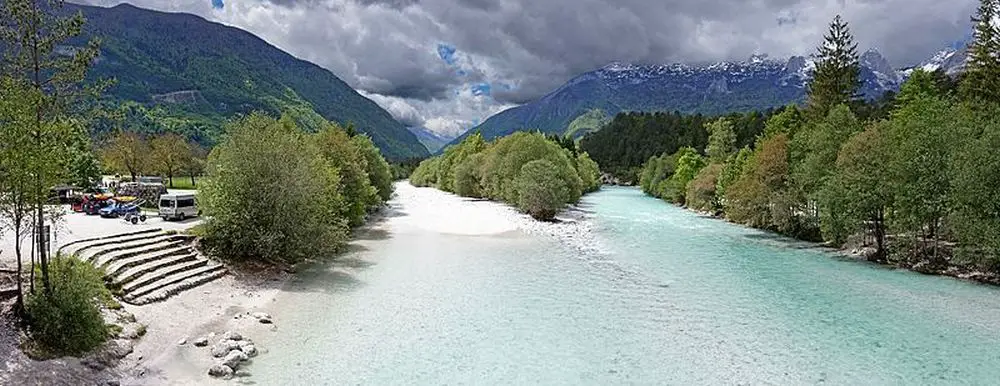
One of the Slovenia’s most scenic areas, the Soča (ITA: Isonzo) river valley, a filming location for fantasy movies like Narnia (Prince Caspian, 2008) and one of the main Slovenian tourist destinations, was also one of the bloodiest scenes of World War One. The last of these battles, the Battle of Kobarid (Caporetto), which started on today’s date, is also the one mentioned in Ernest Hemingway’s A Farewell to Arms.
Italy entered WWI due to an alliance with Germany and Austro-Hungary that it had been part of since 1882. At the start of hostilities it refused to commit troops, claiming that the alliance was defensive in nature and that Austro-Hungary was the aggressor.
In 1915 Italy changed sides after the Triple Entente (France, Russia and Great Britain) promised it parts of the Austro-Hungarian territories, in particular the Southern Tyrol, Austrian littoral (today’s Slovenia), and Dalmatian coast (today’s Croatia) after a Austro-Hungarian defeat. In April 1915, Italy declared war on Austro-Hungary and fifteen months later it declared war on Germany.
Austro-Hungarian troops, in anticipation of the Italian offensive, moved from the border with Italy to the left bank of the Soča River to await the Italian army in a terrain difficult to conquer.
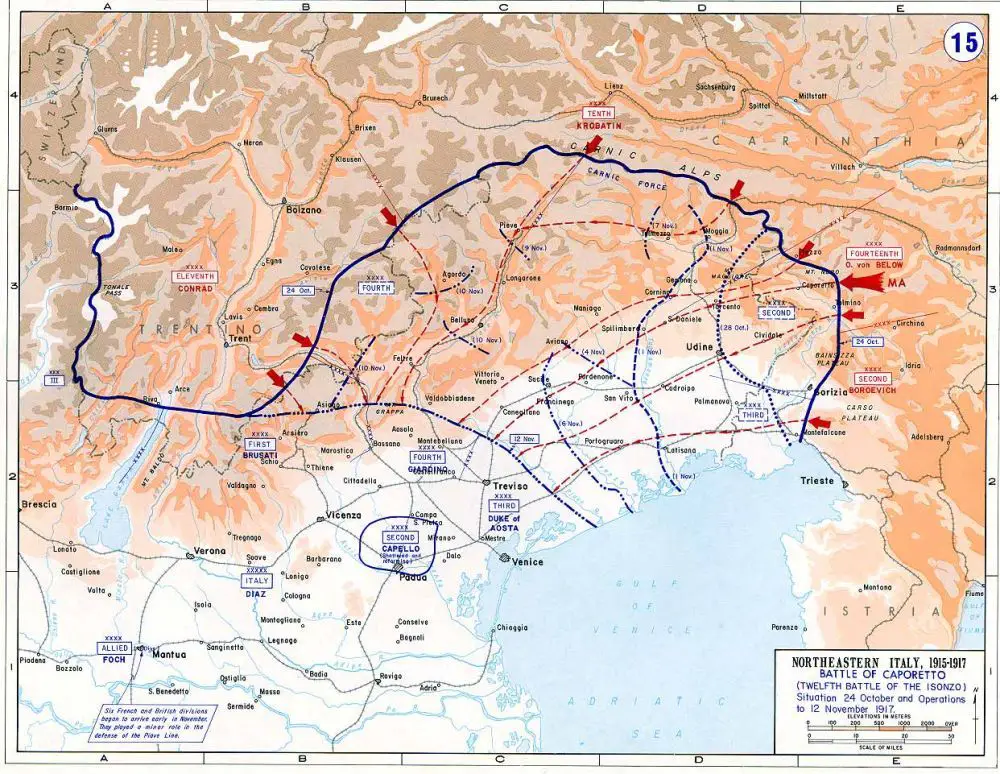
The numerically superior Italian army was led by Field Marshal Luigi Cadorna, a proponent of the frontal assault, who had planned to break into the Slovenian plateau, take Ljubljana and then threaten Vienna.
On the side of numerically weaker Austro-Hungarian army was Field Marshal Svetozar Boroević, a Serbian Croat and the only non-Austrian commander of this rank, who managed to persuade Emperor Franz Joseph that what was believed to be an indefensible part of Slovenia was is in fact worth defending, which placed him in command of Soča.
The terrain did in fact prove difficult for the Italian offensive, and the battle line practically didn’t move for the first eleven battles that took place over the following two years, exerting tremendous suffering not only on the troops but also the local population, who found themselves in the middle of the crossfire, famine and disease.
In the second half of 1917 the Austrian-Hungarian army was not only exhausted by years of war in steep mountain trenches, but also losing morale due to lack of progress and the aspirations for independence by various peoples under imperial rule. Emperor Karl I (Charles I), Franz Joseph’s successor and the Austrian commanding officer, decided to ask the Germans for help. If the Soča Front had fallen, the Austrian army would have collapsed and German offensive in the western front might fail as well. The Germans agreed and in September 1917 the plan for attack was drawn which was supposed to happen on October 22, but the date eventually changed to the 24th due to preparation delays.
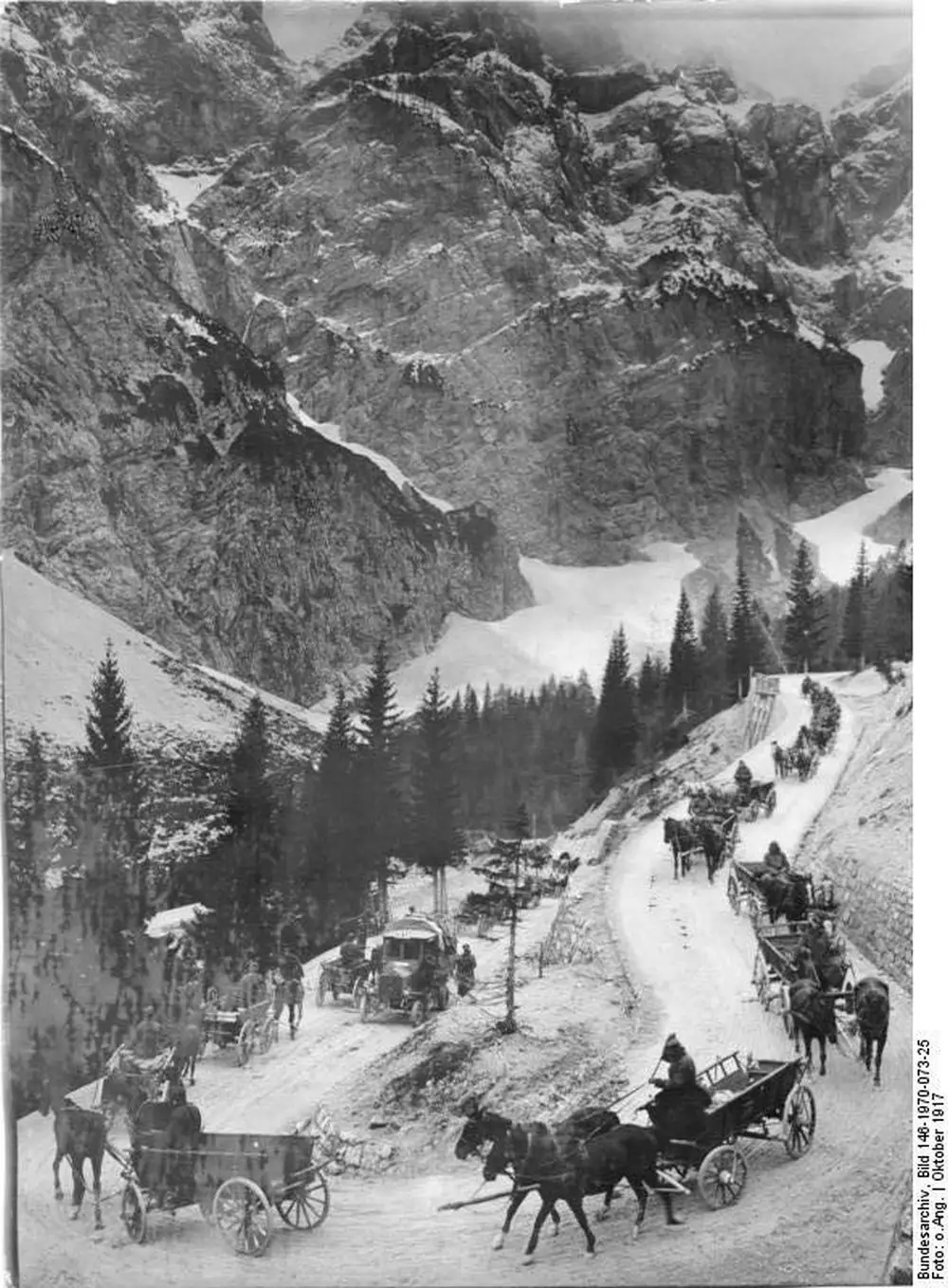
Italian commanders began suspecting that Austria was preparing an offensive on September 14th, when it the closed border with Switzerland to prevent information from being leaked. By the end of the month the Italian command headquarters were informed about the presence of the German officers in the Tolmin area and Grahovo by Bača, and then about the arrival of Germans to Ljubljana and Tolmin at the beginning of October.
Despite all the warnings that an attack would occur somewhere in the upper Soča valley, the Italian commander Cardona believed that the Austrian offensive would occur at Banjšice plato near Gorica, so he moved most of the artillery units there.
The traditional military wisdom, which Cordona had followed, dictated the preferential capture of the hills from where the surroundings could be controlled. The German and Austrian strategists turned the idea upside down, planning to attack through the valley where the enemy was most vulnerable, in order to surround the heavily fortified hills and take them down one by one in the second phase of the offensive. In realization of this plan, they got a lot of help from the weather, as on the day of the attack it rained in the valley and snowed in the mountains.
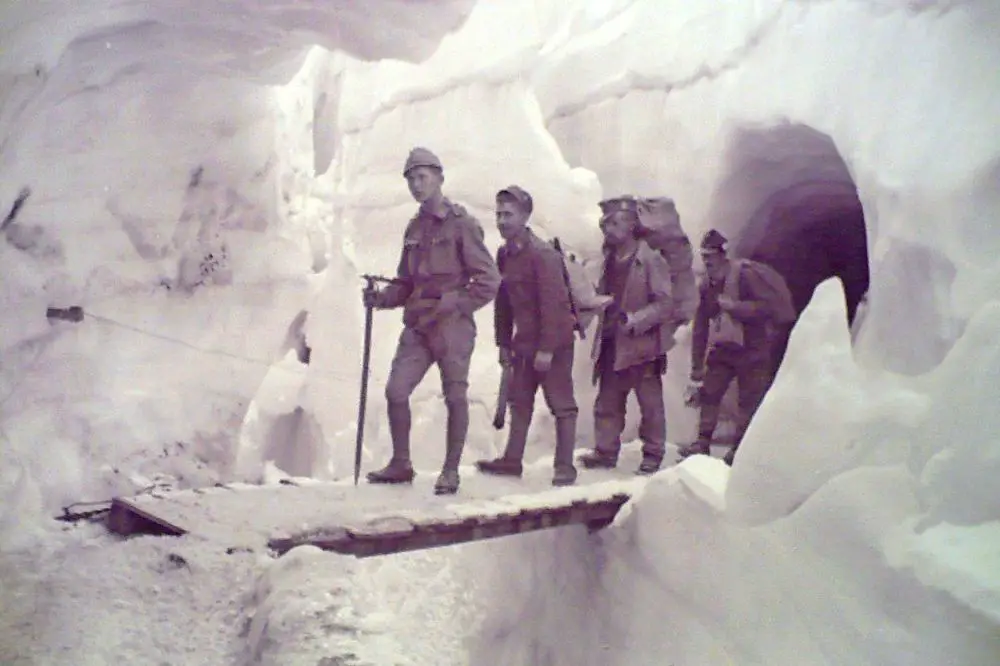
Generally speaking, the 12th battle of Soča, also known as the Battle of Kobarid or the Battle of Caporetto, is considered the first to successfully employing the vague strategy of blitzkrieg commonly believed to be a WWII invention: infantry break through the weakest link in the adversary’s defense line, getting through behind its back and finishing it with artillery after it tries to follow.
Italian defense lines were well-fortified and equipped. In fact, the positions were carved into stone walls, making them accessible from the front face only. To get to their positions, which were distributed in three parallel defense lines, one would also have to get over the wire hurdles first.
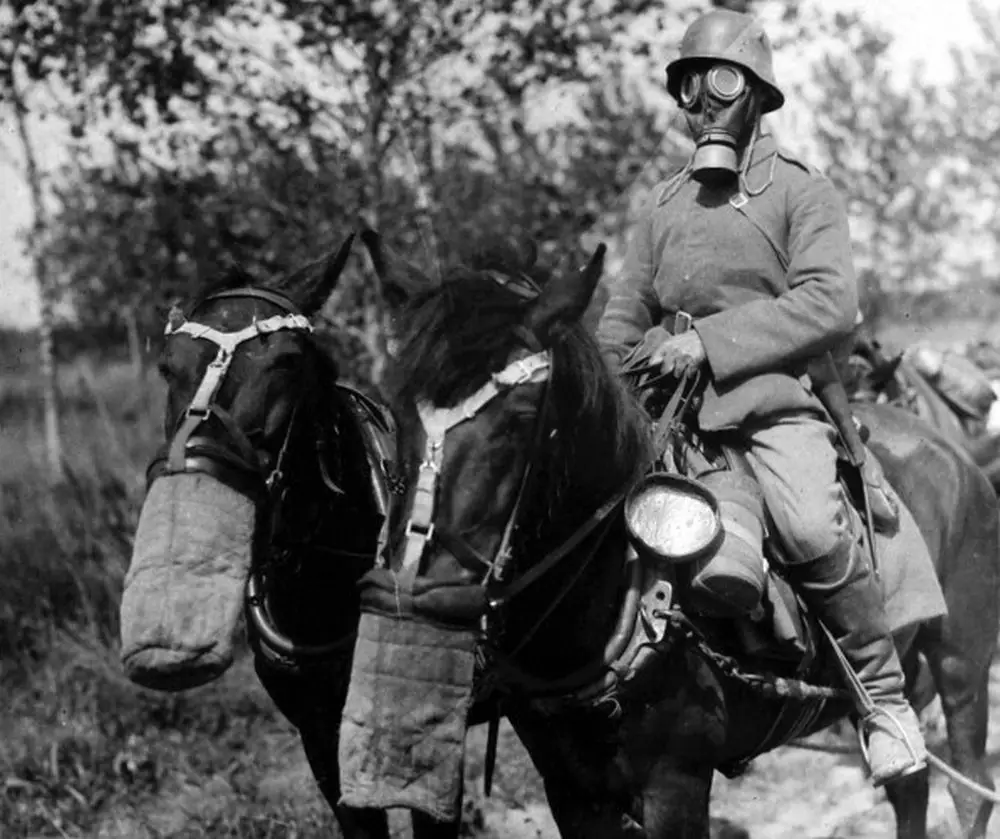
The Austro-Hungarian and German army decided to solve the problem by the use of gas, which had already been used by the Austrian army in 1916. The gas used then was chlorine. This time, two gasses were prepared to deploy, chloroarsine and phosgene, the first one being a sneezing agent which seeped through the gas mask filters and caused an irritation which would force soldiers to take their masks off and thus inhale the second gas, phosgene, the deadly poison.
The battle began at two in the morning, when more than 111,000 gas grenades, the first the ones marked with blue crosses, then the ones with green crosses, were shot at the Italian side. Then the front was quiet till six in the morning, when full fire opened at the attempts to fill in the gaps in the defense lines. The infantry then moved through the valley with almost no resistance, advancing about 25 kilometers towards Italy on the first day alone.
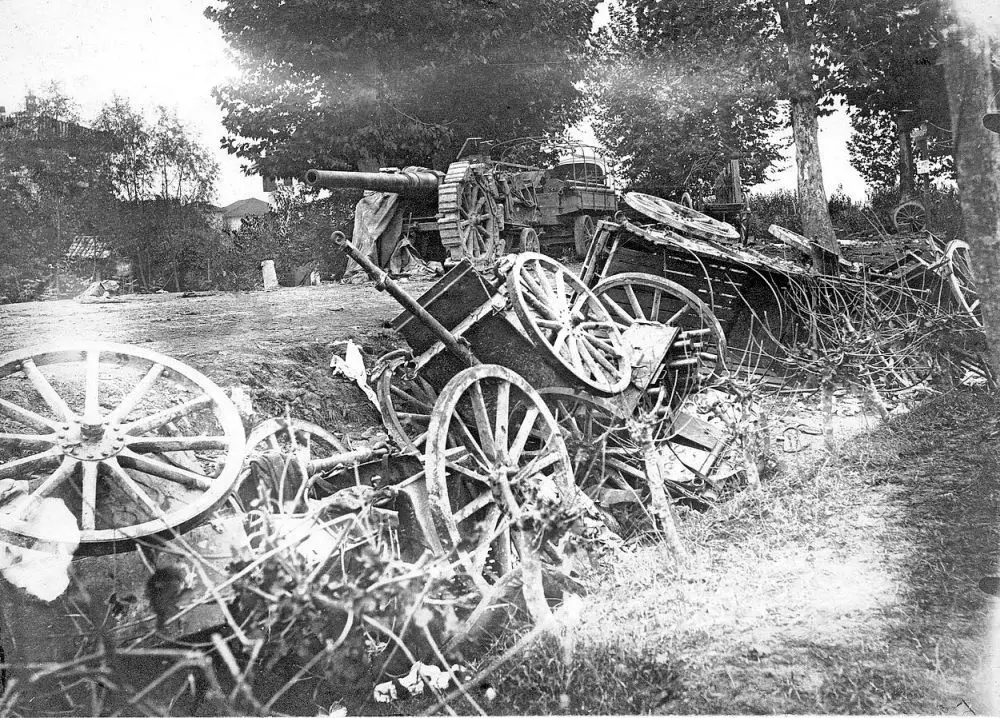
Eventually the attackers were stopped at the Piava River, where they were decisively defeated in the Battle of Vittorio Veneto in October 1918.
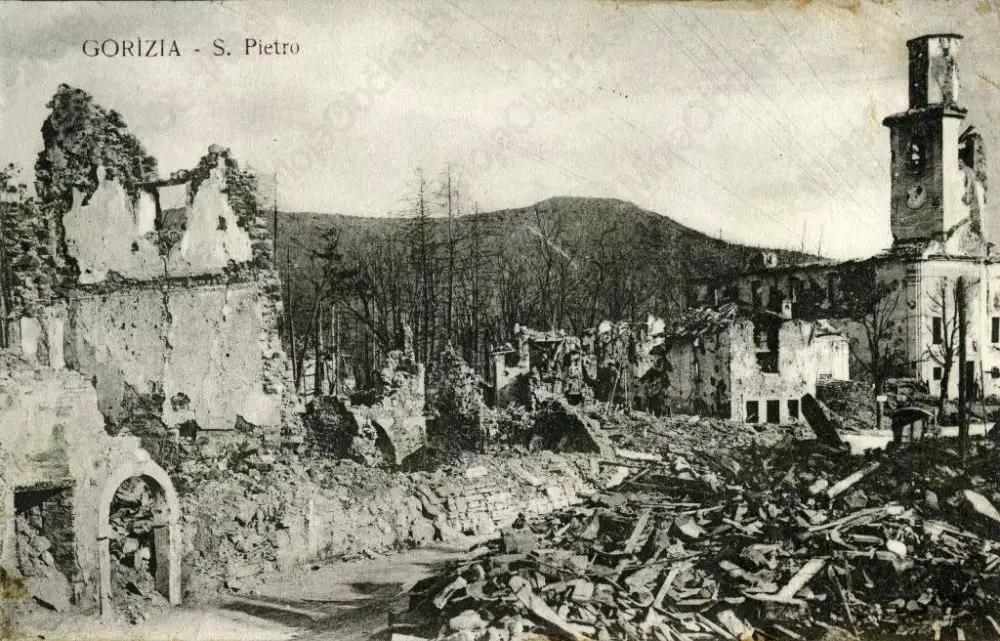
Austria-Hungary surrendered on 11 November 1918. The larger part of Carniola joined the Kingdom of Serbs, Croats and Slovenes (Kingdom of Yugoslavia), while Italy got its promised spoils of war (apart from Dalmatia) that included the former Austrian littoral with the border line drawn just under the peak of Triglav.
Halloween means another all-night movie marathon at Ljubljana’s Kinodvor, with five thrilling horror movies to enjoy from 19:00 Thursday until past sunrise on Friday. The programme, selected by Marcel Štefančič Jr., will be supported by a horror make-up service and bloody specialties in the café, and a special DVD offer in the bookshop.
Tickets for a single screening are €5.30, or €4.50 Kinodvor Club members, the over 60s, students or people in costumes. If you want to stay up all night with the film freaks then you can get a ticket to all the screenings €21, or €17 for the reduced group.
If staying up all night isn’t your thing, or you don’t live in Ljubljana, then you can still enjoy the following trailers and click here to see what’s playing at Kinodvor during regular hours this week.
Thursday 31/10/19
19:00 – The Lighthouse
21:30 – The Lodge
00:00 – Midsommar
Friday 01/11/19
02:45 – The Witch: Part 1 - The Subversion, (Korean with English subtitles)
05:15 – Piercing
STA, 24 October 2019 - The country's top research institution, the Jožef Stefan Institute (IJS), and the Slovenian World Congress are hosting a conference on Thursday and Friday featuring scientists and business executives from around the world. The topics to be discussed range from the impact of the global economy on society to climate change.
The conference is divided into four parts. The first will focus on the effects of the global economy on society, where Nina Pavčnik of the Dartmouth College in the US will speak about inequality in international trade today, while Mojmir Mrak of the Ljubljana Economics Faculty will present the fragmentation of the existing and the beginnings of a new economic system.
The second part of the conference on Friday will discuss technological development and the challenges of the modern economy. Gregor Cevc from the Advanced Treatments Institute in Germany will present the latest development in biotechnological therapeutics.
Mihaela Žigman from the Max-Planck-institute, also from Germany, will present her achievements.
One section of the conference will be dedicated to the presentation of the achievements of Slovenian scientists and businesses, while another will discuss the impact of climate change on the economy.
In this section, Griša Močnik of the IJS will talk about measuring the impact of absorbing aerosols on the climate.
Today's opening of the conference will be addressed by Prime Minister Marjan Šarec, who is the honorary sponsor of the event. Education, Science and Sports Minister Jernej Pikalo and Minister for Slovenians Abroad Peter Jožef Česnik will also take the stage.
More about this conference can be found here
STA, 22 October 2019 - The average disposable income of Slovenian households was up 5.8% across Slovenia in 2018 on the year before. The northern Koroška region had the highest disposable income per citizen, followed by south-eastern and central Slovenia, shows the Statistics Office data released on Tuesday.
Meanwhile, the lowest disposable income was recorded in the north-eastern Pomurje region.
The average Slovenian household disposable income stood at some EUR 11,870.
It increased the most in the Posavje region and south-east Slovenia - by 7.3% in each, and the least in Pomurje - by 4.3%.
The household disposable income mainly depends on wages, which were up by 7.2% in 2018 compared to the previous year.
The regional disparities were slightly bigger in 2018 than in 2017; however, they have significantly reduced since 2008.
Compared to the national average, the disposable income of Slovenian regions varied by 3.3% in 2018, while in 2008 the average gap between regions was at 6.6%.
More details on this data can be found here, while more statistics on Slovenia are here
For one more time Open Kitchen will spread its stalls at Pogačar Square by Ljubljana Central Marketplace this Friday, October 25, before shutting down for its regular winter hibernation.
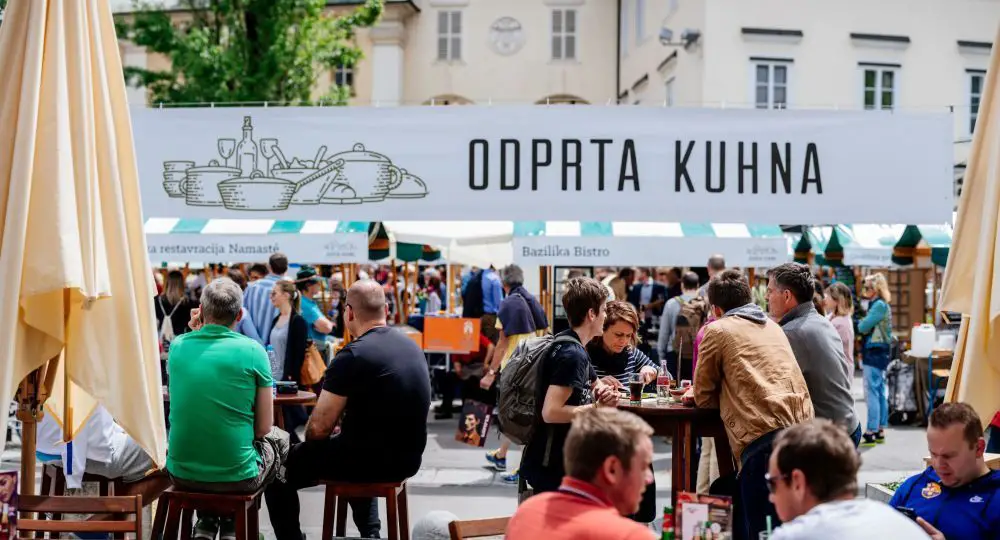
This season, report the organisers, has been particularly successful, with a record number of Open Kitchens in Ljubljana and other cities, which included Koper, Nova Gorica, Celje, Novo mesto and Ptuj. The team behind this already well-known has also organised the Spring and Autumn Beer & Burger Fest, which were already 12th and 13th in a row, and the first Brina festival in Križanke, the Ljubljana gin festival, which exceeded all expectations.
In the record-breaking 7th season the providers of the best Slovenian restaurants prepared more than 300 different dishes. Almo Kochavy, co-founder of Open Kitchen, is especially pleased that among a number of new entrants this season, many top chefs such as Igor Jagodic (Strelec Restaurant), Jorg Zupan (Atelje), Peter Kovač (Maxim), Mojmir Šiftar (Evergreen), Luka Gmajner and Marko Magajne (Flavors Gallery) and Damjan Fink (Fink House), also joined the stalls this year.
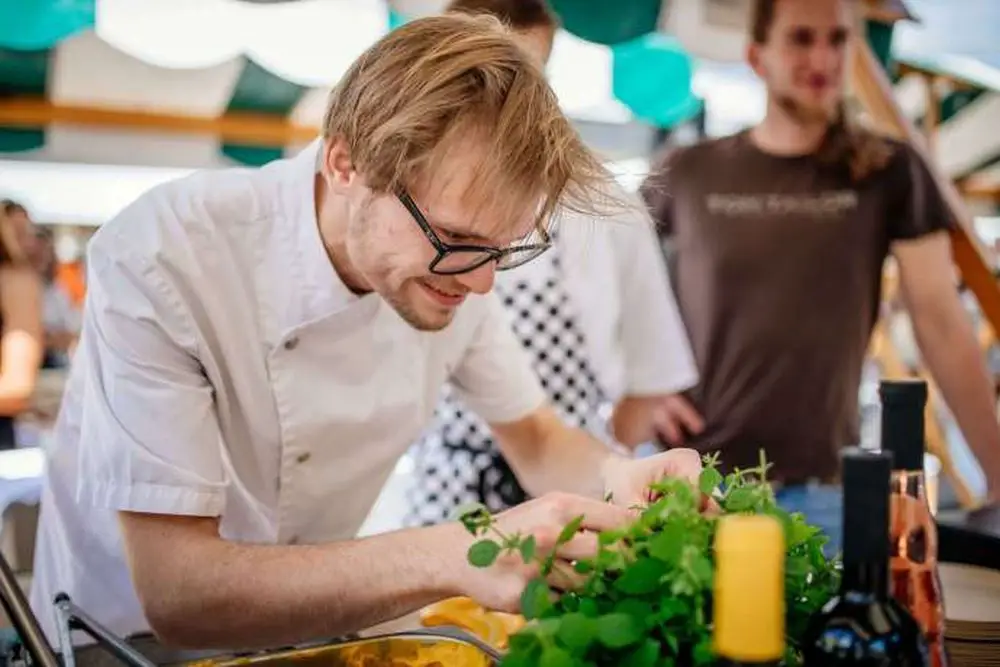
Related: An interview with Open Kitchen’s Lior Kochavy
The team is also proud of the attention this season’s Open Kitchen was given by the local and foreign press, including French magazine Marie Claire, Olive Magazine, the Dutch RTLZ portal, Finnish and German national broadcasters, National Geographic and Netflix. Open Kitchen was also among recommendations made by The Independent, The Guardian and Lonely Planet travel guide.
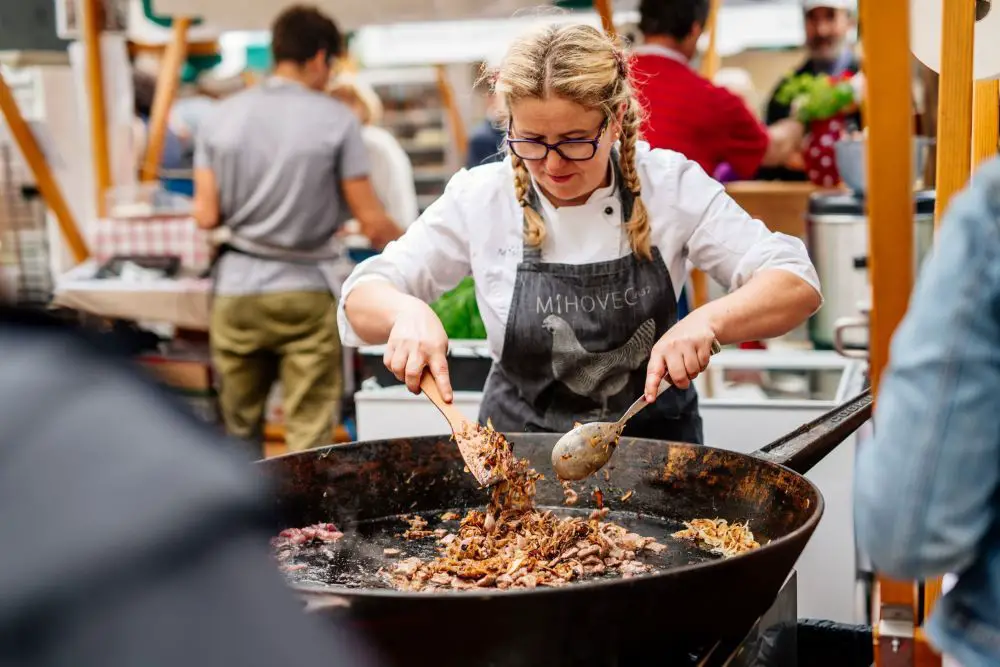
Such recognition of Open Kitchen contributes to greater recognition of the city as well as the Slovenian culinary scene in general. The team is not resting over the winter, however, as they are already in preparations for the upcoming season, in which events will be hosted in both existing and new locations.
Fingers crossed it comes to our town next.
Dober tek!

In 1492 the Holy Roman Emperor Frederick III issued a special decree formulating the scope of farmers’ trade.
In the 15th century farmers began trading their goods outside of their homes, which prompted city merchants to complain about loss of the income and workspace.
The so-called Peddlers’ Patent was addressed to the citizens of Kočevje, warning them not to obstruct serfs in their trade, but rather allow them to sell their produce and handicrafts. Among the commodities that farmers were allowed to sell according to this decree were wooden items, or what is in Slovenian known as suha roba (dry goods) that farmers manufactured at home.
This right to farmer’s trade was used best by the inhabitants of the Ribnica area, which provided the dry goods trademark “of Ribnica”. October 23 therefore remains the main holiday of Ribnica municipality.
The reasons for this socio-economic decree were, however, geopolitical in nature. Between the years 1469 and 1491 Turks plundered the region in 22 raids. In 1491 they burned Ribnica and Kočevje and the serfs, who lost their homes and their harvests, planned to move inland. The Peddlers’ Patent thus opened up a new means of income and an incentive to stay.
The patent was renewed by all subsequent emperors, protecting this particular handicraft from guild attacks for centuries to come.
There’s at least one building outside the very centre of Ljubljana that functions as a landmark from far, as one of the city’s most distinctive structures, as well as one of the tallest – not that there’s much competition in that regard. That’s the triangular building with all the terraces and colours that echoes the mountains you can see behind it on a clear day.
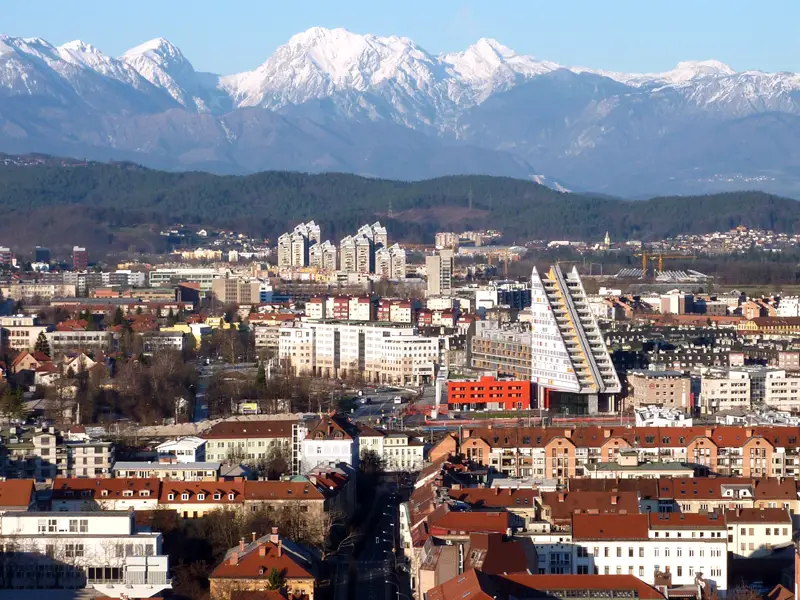
© Genius Loci d.o.o.
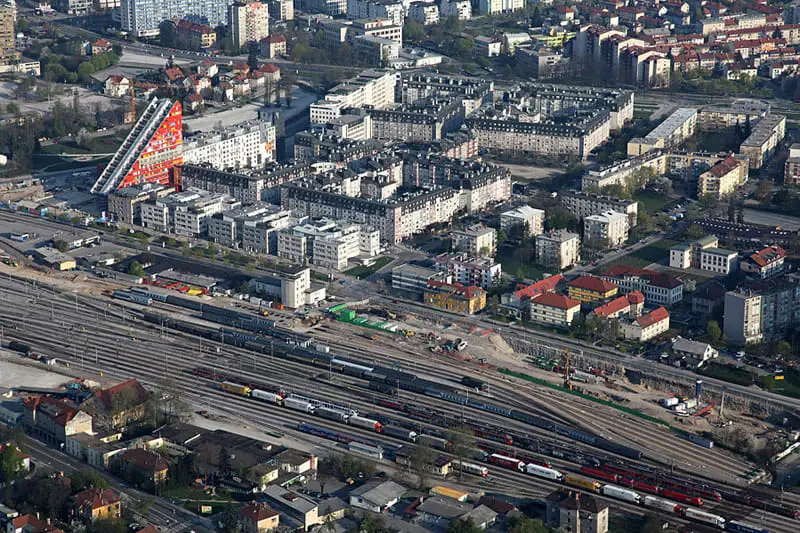
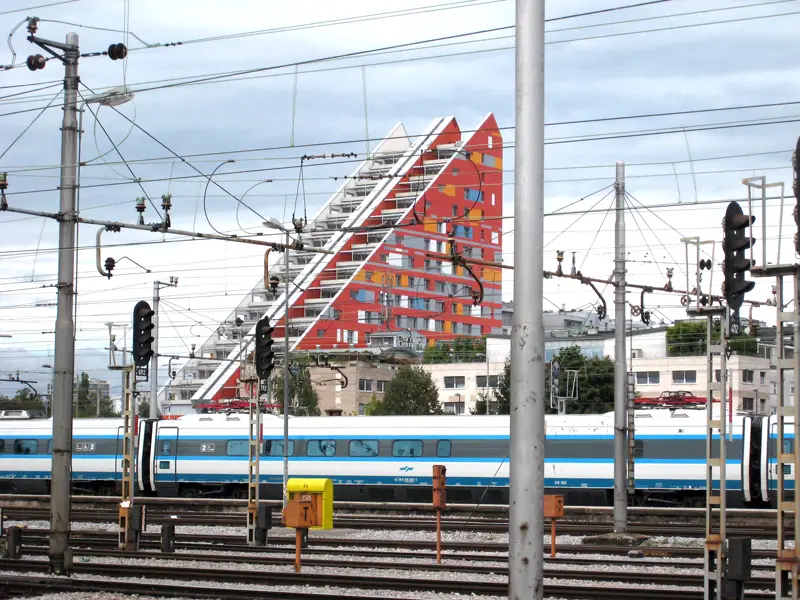
© Genius Loci d.o.o.
The building is called R5 and was completed in 2010. It’s got 16 floors above ground for a height of just under 59 metres, roughly the same as TR2 (60 m) and smaller than TR3 (69 m) in Republic Square. The lead architect was Andrej Černigoj, working in collaboration with Katarina Živanović Kavčič, Bojan Mrežar, Nika Kremžar, and Cveto Kunešević, with the client being SCT Stanovanjski Inženiring D.O.O. The architectural firm was Genius Loci, who kindly provided all the pictures for this story.
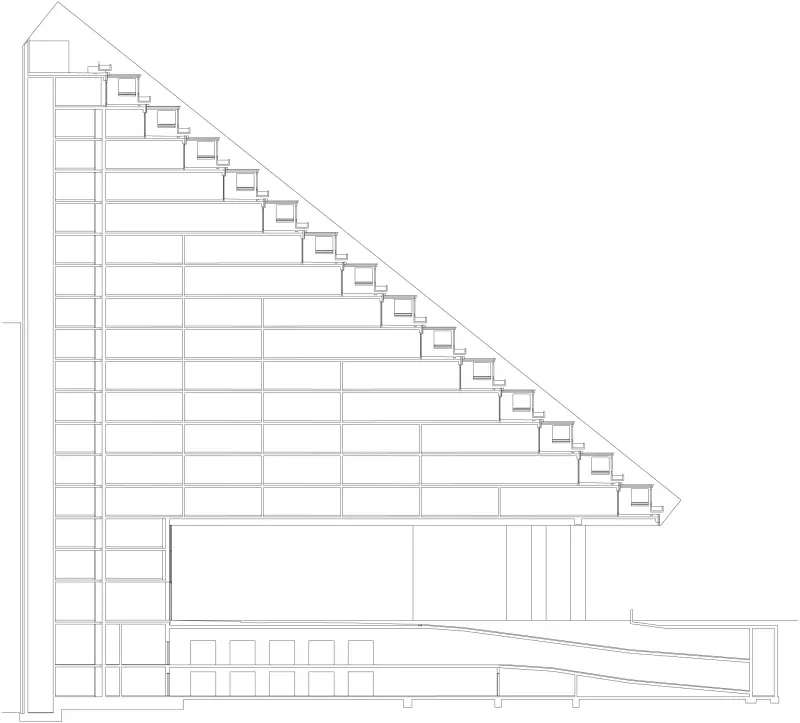
© Genius Loci d.o.o.
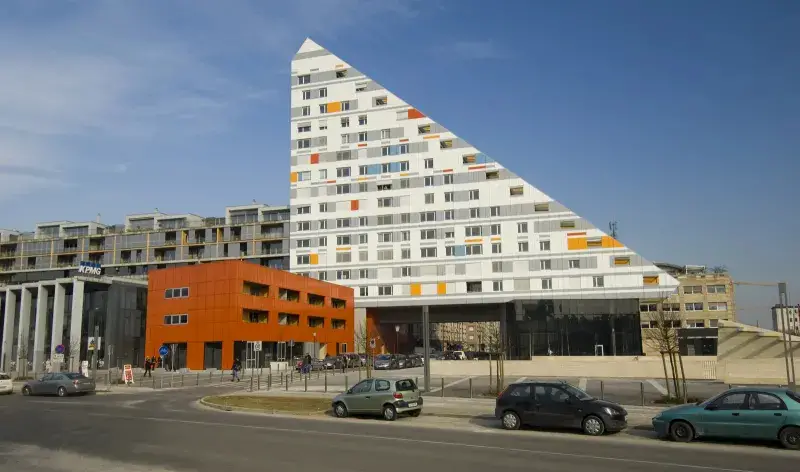
© Genius Loci d.o.o.
The overall structure is three residential and business buildings on the north side of Ljubljana Railway Station. The south side of the tallest building, with 100 housing units, gets smaller as it rises, giving the distinctive terraces and shape. It has a width of 17 metres, and while at the bottom the length is 65 meters, by the top floor this is only 7. The two smaller buildings have seven and three floors above ground, and - as seen in the pictures above and below - you can drive through the complex itself, which crosses Hacquetova ulica.
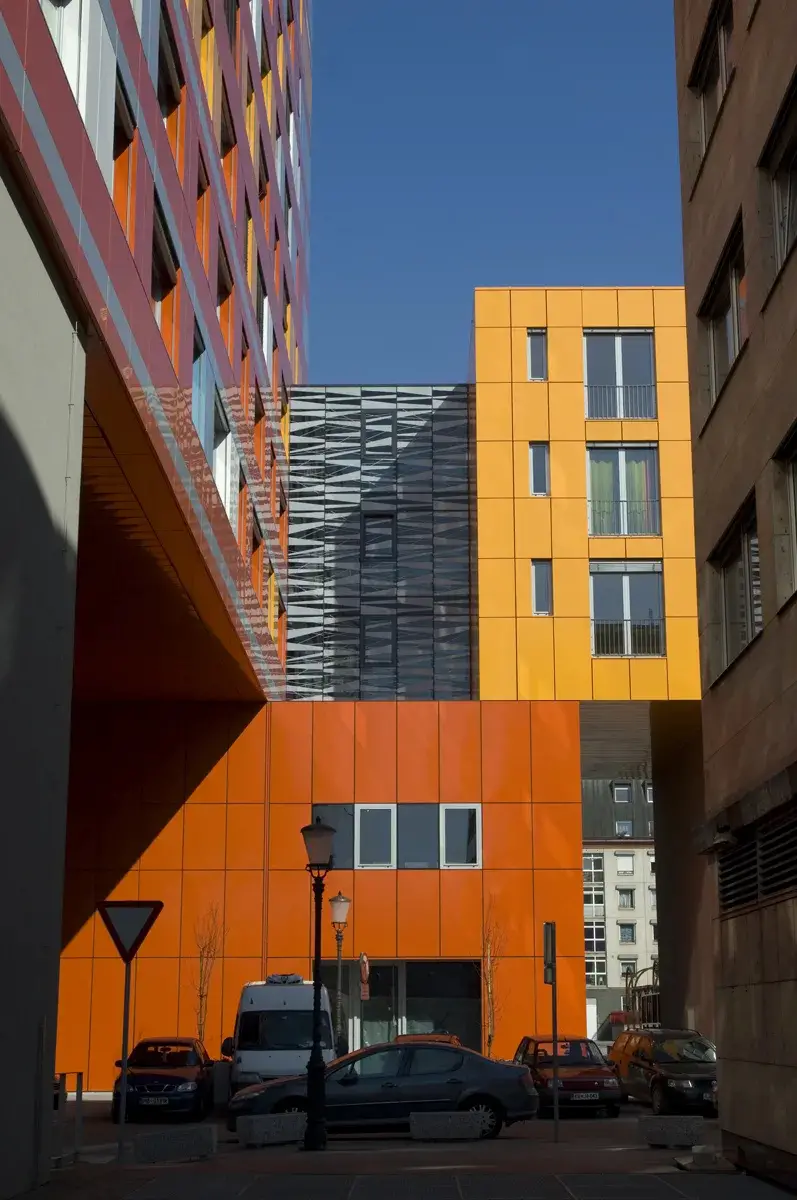
© Genius Loci d.o.o.
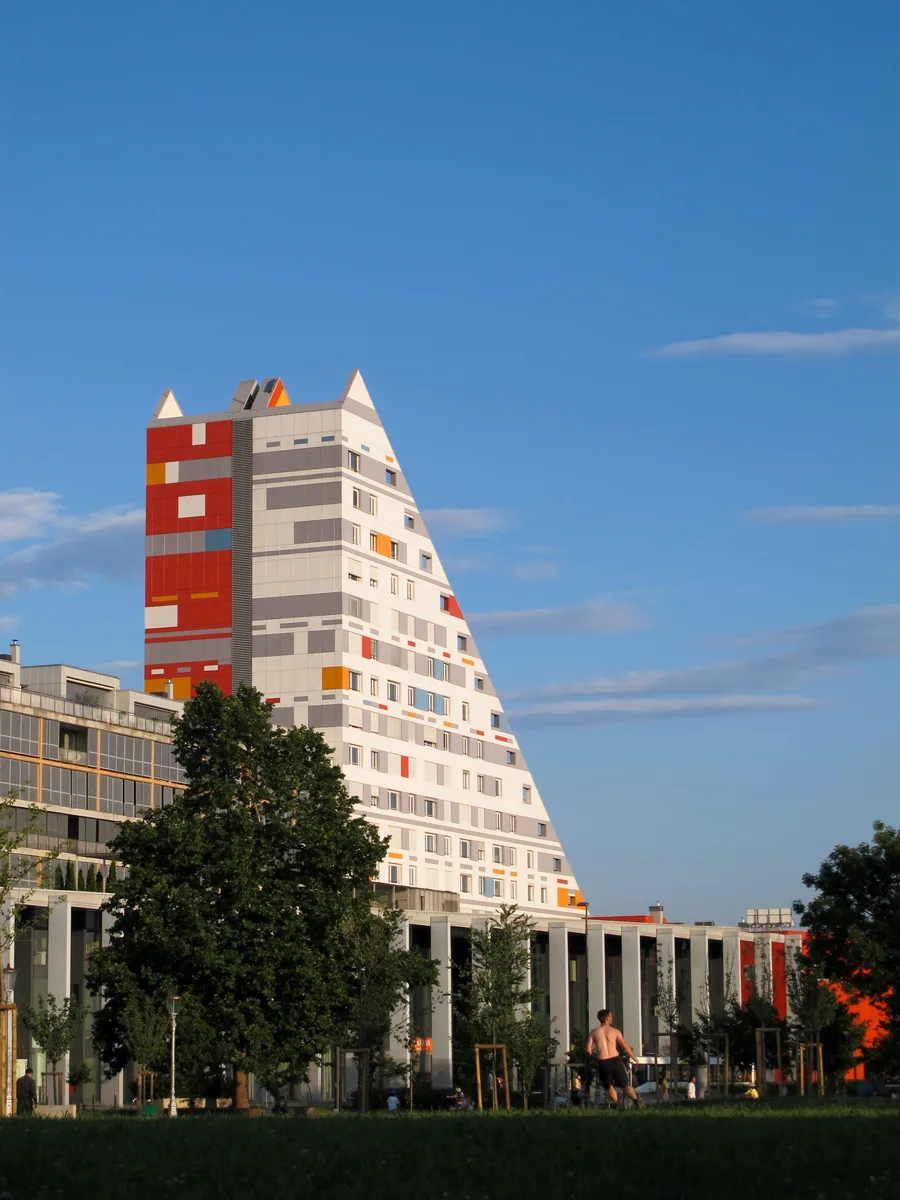
© Genius Loci d.o.o.
According to one website the whole thing cost around €23 million to build. Information on how much apartments in the building go for isn’t easy to find, but in May 2013 you could get a duplex with two bedrooms, 129 m2 of space, parking and a terrace for €219,781. This represented a reduction of up to 62% on the original price, although note that “up to 62%” refers to 14 different properties within the building and perhaps not this specific unit (details here). By September 2013 a three-bedroom, 104 m2 apartment with a terrace was being sold for €300,000. More recently, in October 2018, and after a few hot years for real estate in Ljubljana, a four-bedroom duplex at the top of the tower was on the market for €680,000.
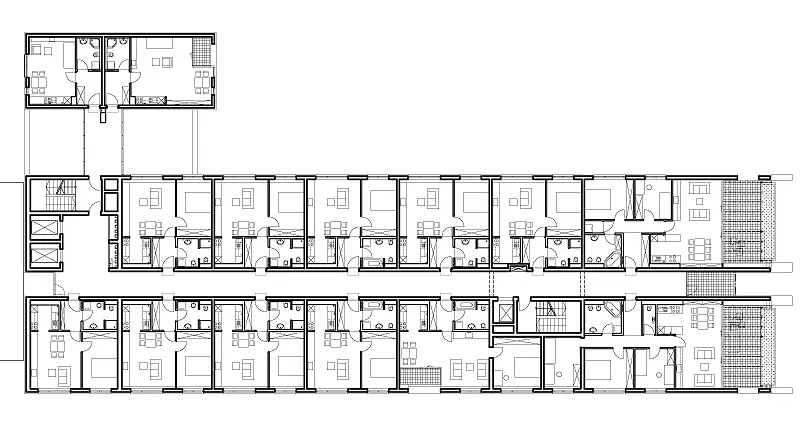
“In the part of the building without terraces are typical small urban dwellings in the 7.5x7.5m structural module, with installation connections along the inner wall that allow completely free arrangement of walls and furniture.” © Genius Loci d.o.o.
Related: Let’s See the City - Ljubljana: Architectural Walks & Tours
You can get close to R5 at Hacquetova ulica 2, or enjoy the view from many places downtown.
Related: Meet the People - Walking With Robert Potokar, Architect
STA, 21 October - Life-size cut outs of traffic officers, which were set up in Posočje in August to improve road safety, have turned out to be highly effective, reducing speed limit violations by more than 80%. The north-western region is infamous for reckless motorcycle riders using local roads for racing.
The Traffic Safety Agency (AVP) tested the measure in October and gathered reliable evidence that showed drivers would slow down upon noticing the cut outs. The test included more than 1,000 vehicles.
The traffic watchdog has thus decided to carry on with the measure, which has been proven to swiftly reduce the average speed and dissuade the drivers from committing traffic violations.
The agency's head Vesna Marinko said that the cut outs had reduced the speed rate by up to 20%.
"Experience suggests that this measure is effective when the location of cut outs is changed often," said Marinko.
The number of traffic offences has been diminished as well - by 68% and 89% in two different locations.
The Koper Police Department is expected to start using the cut outs soon as well. Meanwhile, the agency plans to implement additional preventive measures next year.
However, it was not just the drivers who apparently noticed the cut outs and hit the brakes - at the start of September, three cut outs got some extra attention, being stolen.
STA, 22 October 2019 - Representatives of several Celje civil initiatives warned on Tuesday about excessive levels of heavy metals found in the soil in the Celje area, describing the city as "Slovenian Chernobyl" due to its various environmental issues.
The initiatives' representative Boris Šuštar said at today's press conference that results of analyses showed that, compared to the Slovenian average, attic dust in Celje contained 100 times more cadmium and 50 times more of other pollutants, including carcinogenic ones.
Heavy cadmium pollution in the area is part of the infamous legacy of chemical company Cinkarna Celje's predecessor, the old zinc factory.
Šuštar pointed out that the area of the former factory, covering 17 hectares and going nine metres deep in the ground, is polluted by a staggering amount of 1.5 million m3 of mostly toxic waste.
He believes that no other urban area in Europe is as polluted as the one in Celje, so he called for a comprehensive approach to the issue.
The initiatives also draw attention to noise pollution and dying trees in the city and its surrounding areas.
Cleaning of degraded areas in and around the city of Celje has been under way for a while, with one of the most burning issues being the polluted soil of school and kindergarten playgrounds.
The plan for this year was to clean five kindergarten playgrounds in the city, a project valued at around a million euro, with another five to be cleaned in 2020.




